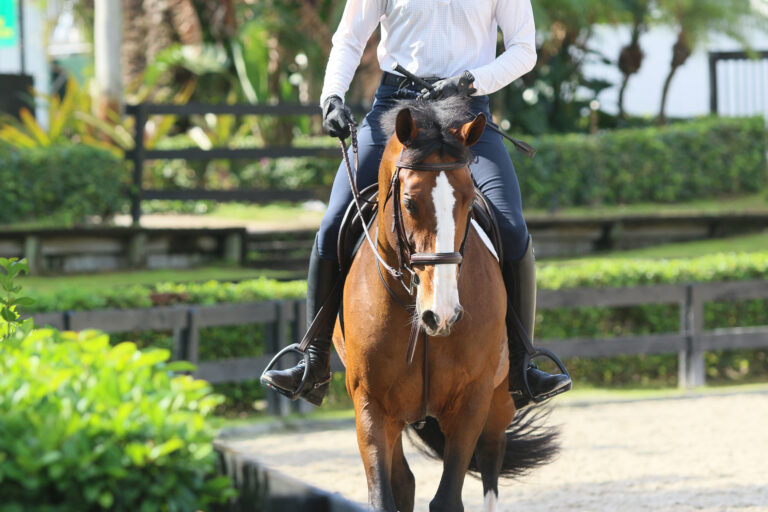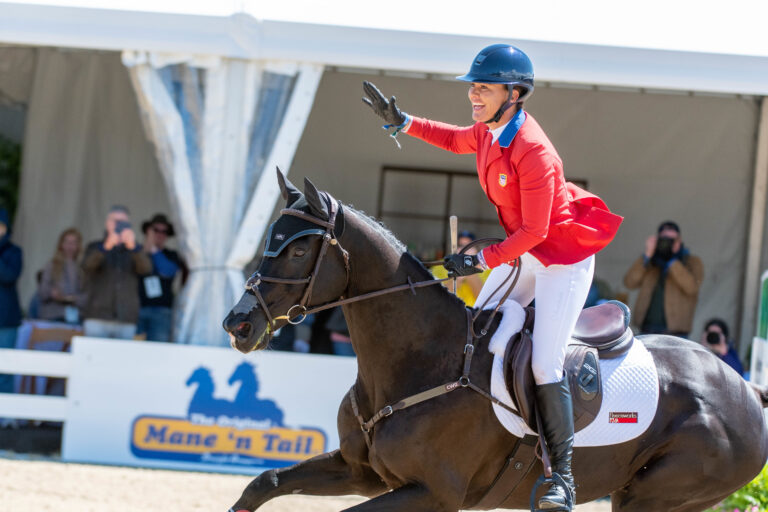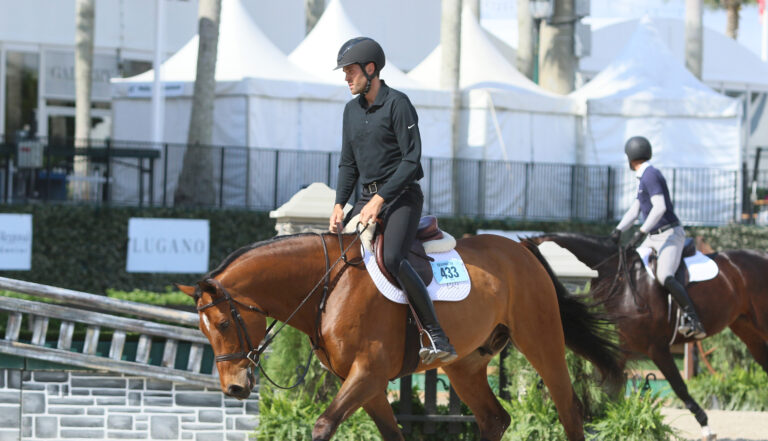We’ve all been there. One moment, you’re cruising through a pretty perfect jump course, and the next moment you’ve lost all focus and have no clue where you’re piloting your horse next. Unlike dressage riders, who can learn and practice their tests months before competition, hunters, jumpers and eventers have far less time to memorize their jump courses. But there are a number of surefire strategies that can help keep you on course and prevent competition jitters and other distractions from interfering with your performance.

Reader Tips
1.) I wish I’d figured out at a much younger age that courses are not random. Every course has a flow, whether it’s an outside line or figure eight. To save myself the horror of going off course, I simply find and follow the flow.
— Laura P., Arizona
2.) I study the course from all four sides of the arena. The fences can look completely different from one place to the next. If I have time, I walk the course in the track that I’m planning to ride. I’m also careful not to cut corners.
— Lindsay H., California
3.) I always advise my girls to name each fence based on its colors or other identifying characteristics. I find that it’s easier to memorize a course by saying “the blue to the green” rather than using the technical term for each fence.
— Lindsay W., New York
4.) As I study the pattern on paper, I face the arena and pretend I am riding the course. I visualize myself riding it perfectly. I see myself changing gaits with ease and attempt to feel the sensations that I’ll experience once I’m in the saddle. I try not to stress over any place where I think I might have an issue.
— Michelle Y., Michigan

5.) Ever since I competed in IHSA events in college, I’ve tried to work out an “outside coming home, inside going away” pattern my head. However, stadium courses are never that simple.
— Erin K., via FB
6.) Whether lines or turns, I find it helpful to mentally visualize where I’m going after each fence. I break complicated courses down into bite-sized sections and focus on perfectly memorizing each section and then put the pieces together.
— Nichole H., Texas
More Course-Memorization Strategies:
7.) Once you’ve committed the course to memory, mentally practice picking it up at any jump. You should be able to recite the rest of it easily. It’s like knowing the alphabet so well that you can remember what comes after L without starting at the beginning.
8.) Even though you might not learn the course until the day of your show, you can anticipate what types of lines, turns, combinations and obstacles you’ll be tackling based on your discipline. Focus on practicing those elements to perfection at home, breaking them down one by one.

9.) Everybody has a different ideal way of learning, so be sure to walk the course at least once by yourself. Create your own mental image of each jump, line and turn—along with all the surrounding visuals—without the influence of anyone else’s thought process. Then make time to sit somewhere quiet to visualize your ride in real time. If the estimated ride time is two and a half minutes, take that much time to ride the course in your mind. Even if your time is limited, spend a few minutes on the side of the warm-up ring to do this while sitting on your horse.
10.) During your visualization, focus not only on the individual jumps, but also on what you’ll do in between them. How will you finish a jump and balance your horse for the next one? How will you make each turn, giving yourself enough room to get straight to the next fence?
11.) Prepare yourself to handle any possible distractions. Say your horse spooks or cuts a corner. Imagine yourself reacting smoothly and efficiently, fixing whatever the problem is while staying on track—or getting back on track—to the next fence.
12.) Use your warm-up time wisely. In the last few minutes before your ride time, try to keep your mind clear. Now is not the time to wander around the ring chatting with friends. Focus simply on your horse and the course at hand.
13.) As soon as you have access to the course, learn its nuances and make a detailed step-by-step plan of how you’ll ride it. Consider what types of questions are being asked and how your horse will respond. Not only do you need to learn the track and remember what jump comes next, you also need to understand how your horse will perform over that course of jumps on that particular day.

14.) Pay careful attention to where all the jumps are located in the ring. Which direction are you jumping them? Some jumps will ride differently because of where they’re placed in the ring. Take this into consideration as you memorize your course.
15.) As you formulate your plan, remember that everything you do influences what happens next. Your jump into a line influences the second jump of that line. Your turn coming off a line influences the second half of that turn, which then influences your next jump, and so on. If you cut a turn, you’ll have less time to think about where you’re going next and what you need to do to prepare. If you pay attention to each step, a course becomes smaller with easier-to-tackle pieces that come together to form a flowing round.
16.) Use landmarks throughout the arena as reminders. As you walk the course, identify prominent features such as cones, specific jumps, fence posts—anything that can serve as reference points—to help you navigate the course.
For more tips to help you stay on course, click here.











